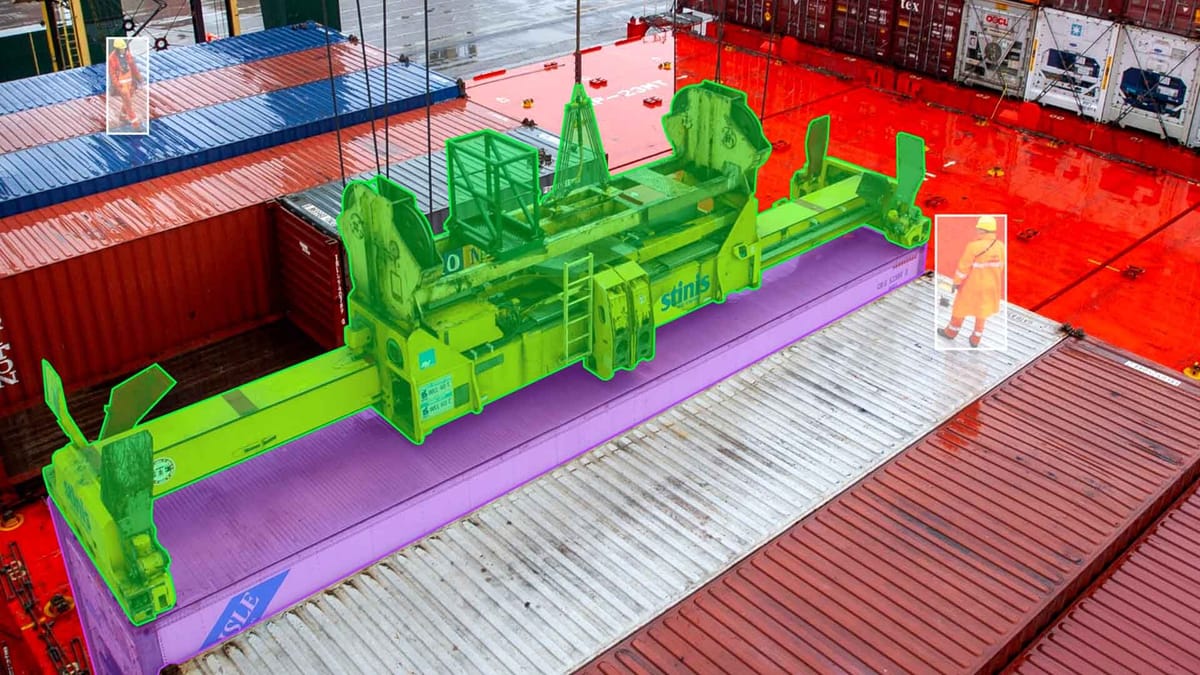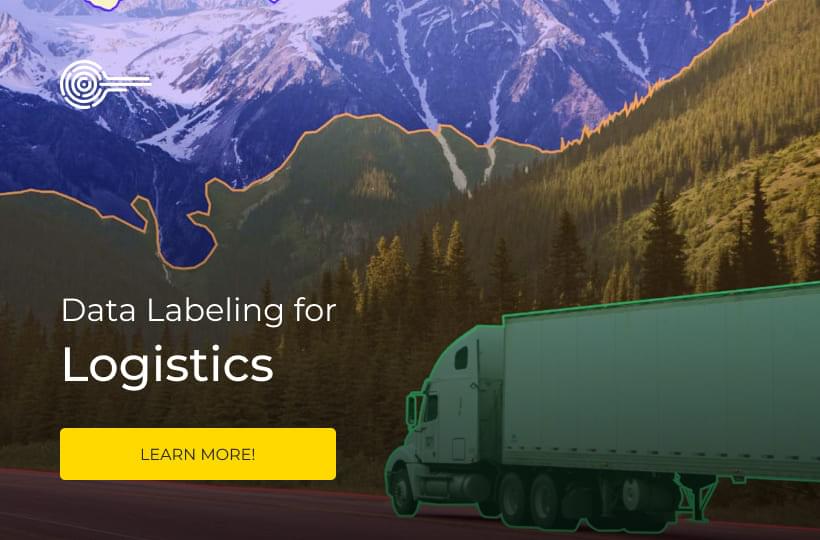Optimizing Logistics Operations with Image and Video Annotation

Image and video annotation are key to boosting logistics efficiency and accuracy. Expertise in logistics AI training data drives innovation and excellence in the field. By labeling visual data accurately, companies can enhance tracking, automation, and decision-making. This approach not only increases productivity but also supports strategic adjustments and innovation in supply chain management.
To learn more about how these advanced tools are changing logistics, check out the Keylabs annotation platform.
Key Takeaways
- Image and video annotation enhance the precision and efficiency of logistics operations.
- AI models trained with accurately labeled data improve tracking, automation, and decision-making.
- Logistics data annotation is fundamental for optimizing supply chain processes.
- Keylabs supports logistics operations with high-accuracy annotation tools.
- Integration of AI in logistics leads to better route optimization, safety enhancements, and cost reductions.
- Advanced analytics extract valuable insights, driving strategic business capabilities.

Understanding Logistics Data Annotation
Logistics operations increasingly rely on artificial intelligence, making logistics data annotation vital for efficiency. From freight data tagging to warehouse data labeling, the detailed process of annotating data is key. It ensures AI solutions work well in supply chain management. Understanding the importance of these annotations is essential for optimizing logistics operations.
Definition and Significance
Logistics data annotation involves labeling various data types, like images, videos, and documents, to train AI models. This process helps in accurate object detection, shipment tracking, and inventory management. It provides structured data for machine learning algorithms. Through transportation data annotation, logistics operations become more accurate and efficient. This opens the door to advanced automation and insightful analytics.
- Fleet Monitoring: Vehicles with cameras use annotated data for object detection, improving safety and efficiency.
- Document Processing: Natural Language Processing (NLP) annotations streamline administrative tasks, like invoice and shipping order automation.
- Customer Support: Labeling customer inquiries enhances chatbot capabilities, leading to more effective and responsive support.
Types of Data Annotation in Logistics
Logistics employs various annotation techniques to meet specific needs. Here are some critical data annotation types for optimizing logistics:
- Bounding Box Annotation: Essential for locating and identifying objects in images, vital for tracking shipments and inventory.
- Semantic Segmentation: Divides image elements into segments for detailed analysis of warehouse layouts and item placements.
- Polyline Annotation: Perfect for outlining paths and routes on maps, aiding in efficient route planning and scheduling.
Utilizing freight data tagging and warehouse data labeling through careful annotation boosts logistics operations. This aligns with the global trend towards AI-driven automation and data-centric decision making.
The Role of AI in Logistics Data Annotation
Artificial intelligence is transforming logistics data annotation, revolutionizing how we manage and interpret vast datasets. By integrating AI in supply chain management, companies can significantly enhance accuracy, reduce manual labor, and streamline operations.
How AI Enhances Annotation Accuracy
AI-powered tools can analyze logistics machine learning data with unmatched precision. These automated systems process complex datasets swiftly, ensuring accurate labeling of each data point. Companies like us specialized image annotation services for logistics, supply chain, and inventory applications.
- Enhanced precision: AI algorithms provide consistent and accurate data annotations.
- Scalability: These systems can handle large volumes of data efficiently.
- Time savings: Automated processes speed up data handling and analysis.
Benefits of AI-Powered Solutions
The advantages of AI in supply chain management are numerous, leading to improved operational efficiency and cost reduction. AI solutions enhance product categorization, boost search engine visibility, and streamline operations. Annotated data also aids in developing AI solutions for automating tasks like inventory handling and call forecasting, leading to better resource allocation and performance.
Further, annotated data optimizes routing plans by tracking visitor behavior, weather conditions, and delivery data. This results in faster deliveries and reduced shipping costs. Yet, the scalability of these solutions poses a challenge due to the increasing volume of information.
| Benefits | Details |
|---|---|
| Enhanced Precision | AI algorithms ensure consistent and accurate data annotations. |
| Scalability | AI systems handle large data volumes efficiently. |
| Time Savings | Automated processes accelerate data handling. |
| Cost Reduction | Streamlined operations and reduced errors lower operational costs. |
| Resource Allocation | AI-driven solutions enable better allocation of resources. |
The application of AI in logistics data annotation offers transformative benefits, paving the way for more efficient and resilient supply chain management strategies. By leveraging image annotation, AI enhances productivity and helps companies adapt to the dynamic demands of logistics.
Image Annotation Techniques for Logistics
Image annotation techniques are vital in the logistics sector, laying the groundwork for precise decision-making and operational efficiency. Through various methods, logistics firms gain a deeper understanding and control over their operations. Let's explore the main techniques and their roles in logistics.
Object Detection and Recognition
Object detection and recognition are key in distribution data annotation. In logistics, they enable the identification of critical items like packages, pallets, and vehicles in images. This allows companies to track shipments, manage inventory, and streamline tasks efficiently. Algorithms like YOLO and R-CNN are used to boost accuracy and efficiency.
Semantic Segmentation
Semantic segmentation is a vital technique in image annotation, mainly for inventory data tagging. It involves dividing an image into distinct regions, each labeled with a specific category. This helps warehouses categorize and tag items accurately, making stock management and retrieval more efficient. Semantic segmentation also improves automated quality checks and safety monitoring in warehouses.
Use Cases in the Logistics Industry
Many examples show the effectiveness of image annotation techniques in logistics:
- Tracking Shipments: Real-time monitoring of parcels through annotated images ensures accurate delivery and reduces lost items.
- Managing Warehouse Inventory: Semantic segmentation helps create an organized inventory system, making item location and stock-taking easier.
- Optimizing Routing Processes: Object detection helps optimize routes by identifying obstacles, reducing delivery times and costs.
In summary, the effective use of image annotation techniques propels the logistics industry towards better operational practices. It ensures precision and efficiency in distribution and inventory management.

Video Annotation Methods and Applications
In the rapidly evolving logistics industry, video annotation is key to optimizing operations. It enables precise event tracking and enhances predictive analytics. By using video data, businesses can deeply understand their supply chains. This leads to better efficiency and proactive management.
Event Tracking in Supply Chains
Video annotation in logistics is mainly used for tracking events in the supply chain. It offers a detailed view of logistics operations. This allows for real-time monitoring and analysis:
- Event Detection: Identifying key events like loading, unloading, and transit pauses streamlines processes.
- Incident Management: Addressing disruptions, such as the 2021 Suez Canal incident, quickly is vital. It shows the need for accurate event tracking.
- Risk Mitigation: AI-powered video annotation helps detect malicious activities. This includes theft and smuggling, improving security.
Predictive Analytics through Video Data
Predictive analytics, powered by video data, helps businesses anticipate disruptions. It enhances operational planning. Annotating video data adds temporal context, essential for predictive modeling:
- Trend Prediction: Machine learning can forecast trends and vessel performance deterioration. This optimizes maintenance schedules.
- Resource Allocation: Predictive analytics allows for better resource allocation. This ensures timely shipment and reception of goods.
- Operational Efficiency: Automation in ports and warehouses improves safety and handling efficiency. It boosts operational output.
The combination of shipping data labeling and video annotation greatly enhances logistics operations. As the demand for video annotation services grows, the logistics sector will benefit significantly. For more information on video annotation complexities and advantages, refer to this article.
Tools and Software for Logistics Data Annotation
In the evolving field of logistics, data annotation is key to driving efficiency and precision. The right image annotation software and logistic tools AI can significantly enhance data accuracy. Keylabs is a popular choice, with unique features for images and video.
Choosing the Right Tool for Your Needs
When selecting the right image annotation software or logistic tools AI, several factors are important:
- Data Security: Ensure the tool you choose complies with industry standards to safeguard your data.
- Scalability: Opt for tools that can grow with your business requirements.
- Diverse Data Handling: The ability to process various data types is essential for logistics operations.
- Cost-effectiveness: Evaluate the pricing models, including open-source solutions, which can offer significant savings for startups and academic projects.
Best Practices for Effective Data Annotation
Success in high-quality logistics data annotation requires careful planning and execution. By adopting best practices, you ensure accuracy, consistency, and efficiency. This foundation is essential for reliable AI models in logistics.
Ensuring High-Quality Annotations
To achieve high-quality annotations, a structured approach is necessary:
- Rigorous Training: Annotators need thorough training to grasp logistics data specifics. This precision is critical.
- Regular Quality Checks: Regular audits are key to maintaining accuracy. Quality assurance is vital for reliable models.
- Advanced Tools: Cutting-edge annotation tools significantly boost speed and accuracy. They should manage datasets, offer diverse techniques, and ensure security.
AI-supported data labeling tips enhance workflow speed and accuracy. This directly improves model performance.
Collaboration Between Teams
Effective data annotation demands teamwork across departments. This ensures everyone is on the same page with project goals and standards.
"By 2025, it is projected that nearly every company will adopt artificial intelligence. Implementing data annotation best practices is key to staying competitive."
- Creating Clear Guidelines: Detailed annotation guidelines are essential. They align annotations with model needs, ensuring consistency.
- Cross-Departmental Collaboration: Open communication and teamwork between departments are vital. They create a cohesive workflow for high-quality data.
- Continuous Feedback Loop: A robust review and feedback cycle is necessary. It helps identify and improve annotation accuracy and effectiveness.
Organizations focusing on teamwork and best practices in data annotation will outperform competitors. They will see higher success rates and improved model accuracy.
| Key Practice | Impact |
|---|---|
| Rigorous Training | Enhances precision and understanding among annotators |
| Regular Quality Checks | Maintains accuracy and reliability in annotations |
| Advanced Tools | Improves speed and accuracy of data annotation |
| Clear Guidelines | Ensures annotations align with model requirements |
| Continuous Feedback | Identifies gaps and enhances annotation efficacy |
Challenges in Logistics Data Annotation
Data annotation in logistics is key to boosting operational efficiency. Yet, it faces several hurdles, including managing different data types and ensuring privacy. These obstacles require thoughtful handling to sidestep major pitfalls.
Handling Diverse Data Types
Logistics data comes from various sources like sensors, GPS, and cameras. This creates a complex mix of data needs. Managing this diverse logistics data management demands creative solutions and advanced tools. Ensuring quality consistency is a major hurdle, as subpar labeling can harm AI model performance.
Manual processes add to the problem, introducing delays and errors. This undermines the data's reliability. The right technology and infrastructure are essential. Yet, companies often face high costs and lack the necessary expertise.
Addressing Data Privacy Concerns
Data privacy in logistics is a non-negotiable issue. With data being processed worldwide, adhering to regulations like GDPR is essential. Outsourcing data annotation carries significant risks, including privacy breaches and severe legal consequences.
Implementing strong security measures, including advanced encryption, is vital. Keymakr prioritizes data privacy with robust security and trained staff handling sensitive information. This approach significantly reduces risks, ensuring data privacy in logistics remains intact.
Future Trends in Logistics Data Annotation
The logistics sector is undergoing rapid evolution, with data annotation at its core. We're seeing significant advancements and innovation. This is thanks to the integration of autonomous logistics solutions and IoT in logistics annotation.
The Rise of Autonomous Vehicles
Autonomous vehicles are revolutionizing logistics, bringing about enhanced efficiency and precision. AI and robotics are key in autonomous logistics, ensuring operations run smoothly without human oversight. For example, Amazon's Kiva system uses robotics for warehouse management, speeding up order processing.
In transportation, autonomous trucks and drones, like those by Alibaba's Cainiao Network, are cutting costs and boosting delivery efficiency. This shift heavily relies on precise data annotation. It provides the critical information for autonomous systems to operate at their best.
Integration with IoT Solutions
The merging of IoT with logistics annotation marks a new era of smart logistics. IoT devices gather extensive data from various sources, such as warehouse sensors and shipping containers. Accurate data annotation enhances real-time decision-making and operational efficiency.
Companies like Walmart are leading the way with AI for demand forecasting and inventory management, thanks to detailed IoT data. Predictive analytics, enabled by annotated IoT data, enables more efficient and responsive logistics operations. With the data annotation market's projected growth, IoT's role in logistics will expand further.
| Trend | Example Company | Impact |
|---|---|---|
| Autonomous Vehicles | Amazon (Kiva System) | Enhanced Efficiency, Reduced Human Labor |
| IoT Integration | Walmart | Improved Demand Forecasting, Real-Time Decision-Making |
| Predictive Analytics | Alibaba (Cainiao Network) | Cost Reduction, Increased Delivery Efficiency |
These trends highlight the transformative power of combining autonomous logistics solutions and IoT in logistics annotation. As companies harness these technologies, the logistics future looks bright. It promises greater efficiency, accuracy, and innovation.
The Impact of Data Annotation on Logistics
Data annotation plays a vital role in optimizing logistics operations. By integrating image and video annotation, logistics companies see significant advancements in AI. These improvements lead to better tracking, enhanced decision-making, and streamlined operations.
High-quality data annotation supports AI-driven innovations, improving operational efficiencies and safety. AI applications, powered by annotated data, can increase productivity by up to 40% and customer satisfaction by over 25%. As we move forward, the impact of data annotation on logistics will continue to grow, with technologies like autonomous vehicles and IoT solutions becoming more prominent. Investing in precise, scalable data annotation services is critical for businesses aiming to lead in this dynamic landscape.
FAQ
What is logistics data annotation?
Logistics data annotation is the process of labeling data like images, videos, and documents. It's done to train AI models. This helps in accurate object detection, tracking shipments, and managing inventory.
What are the types of data annotation used in logistics?
In logistics, data annotation includes bounding box, semantic segmentation, and polyline annotation. Each type is designed to improve visibility and control in logistics operations.
How does AI improve the accuracy of data annotation in logistics?
AI boosts data annotation accuracy in logistics with automated tools and algorithms. These tools process large datasets more efficiently than manual methods. This leads to fewer errors, time savings, and scalability.
What are the benefits of using AI-powered solutions for logistics data annotation?
AI solutions for logistics data annotation offer several benefits. These include reduced errors, time savings, and scalability. These advantages are key for adapting to the dynamic demands of logistics and supply chain management.
How is image annotation used in logistics?
Image annotation in logistics aids in object detection and semantic segmentation. It helps identify and categorize elements in warehouses or during transportation. This enhances tracking shipments, managing inventory, and optimizing routes.
What role does video annotation play in logistics?
Video annotation tracks events and predicts disruptions in the supply chain by analyzing continuous visual data. It enables proactive management and improves predictive analytics. This leads to better-informed business decisions and optimized resource allocation.
What tools are recommended for logistics data annotation?
Tools like Keylabs offer specialized features for logistics data annotation. When choosing a tool, consider data security, scalability, and the ability to handle diverse data types.
How can we ensure high-quality annotations in logistics?
To ensure high-quality annotations, train annotators rigorously and conduct regular quality checks. Use advanced tools and foster collaboration among cross-functional teams. This maintains consistency and accuracy in annotations.
What challenges are faced in logistics data annotation?
Challenges include managing diverse data types and ensuring data privacy. Effective solutions involve complying with regulations like GDPR and using advanced encryption to secure data.
What future trends should we expect in logistics data annotation?
Future trends include the increased use of autonomous vehicles and IoT solutions. These technologies promise to streamline logistics, enhance real-time decision-making, and improve operational efficiency.

